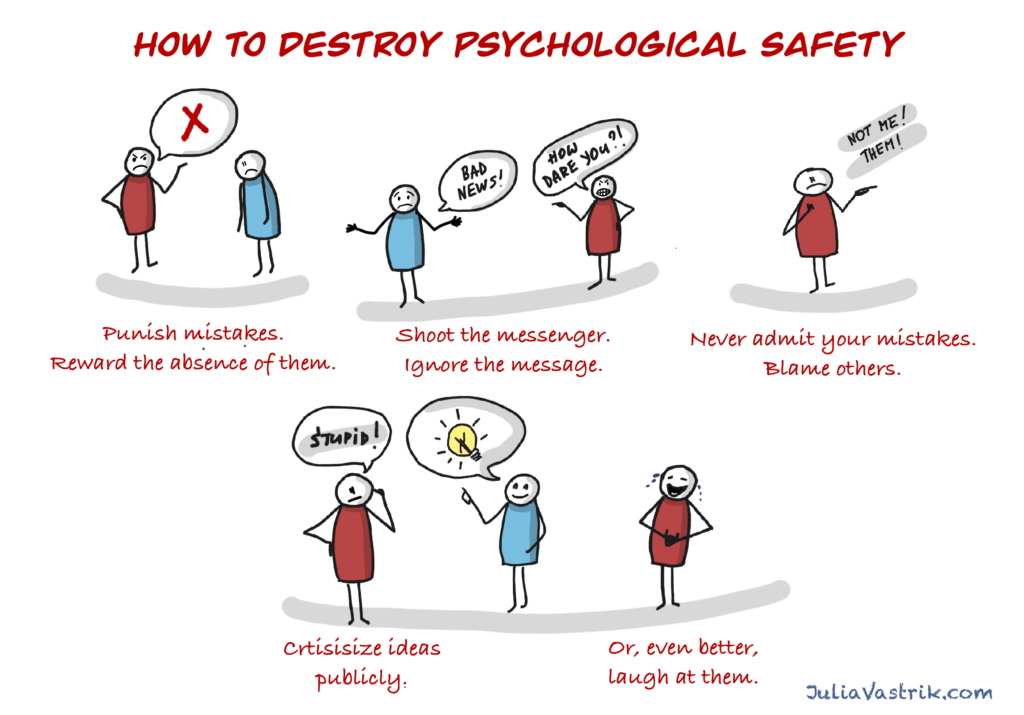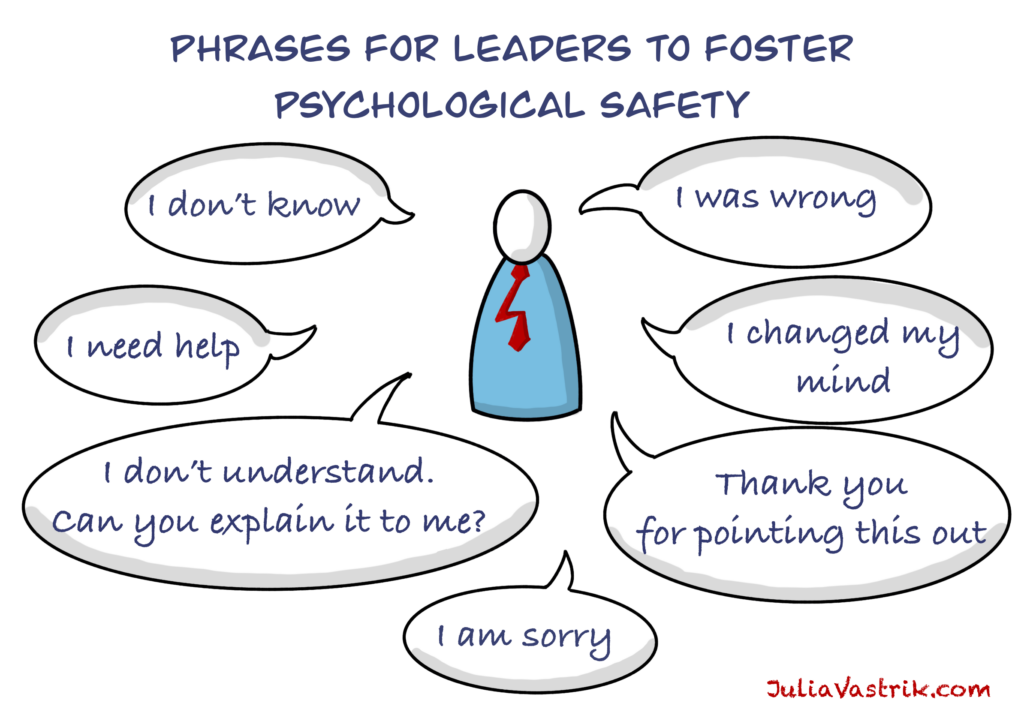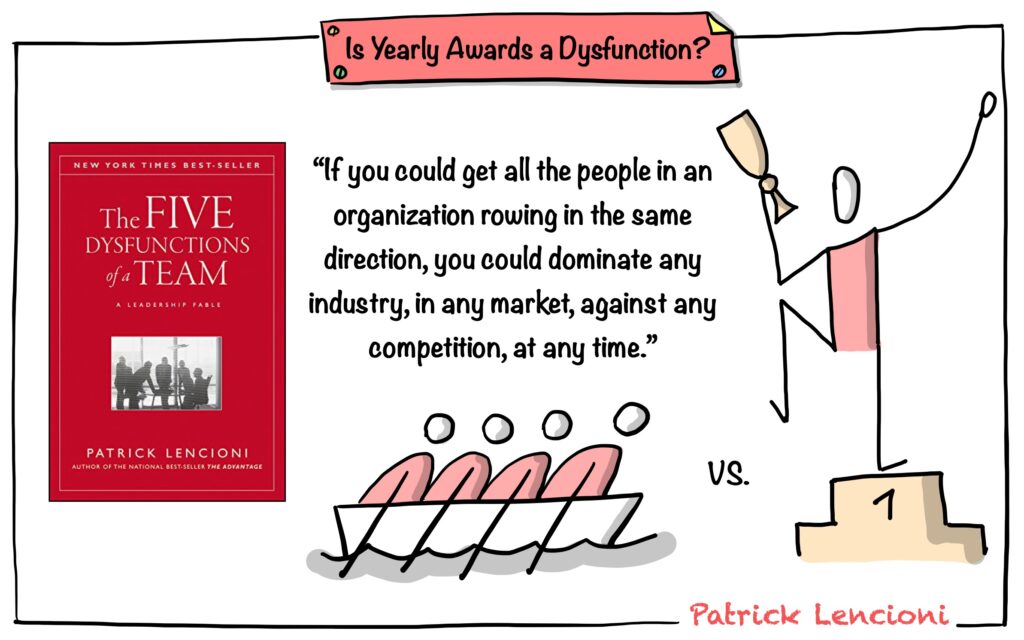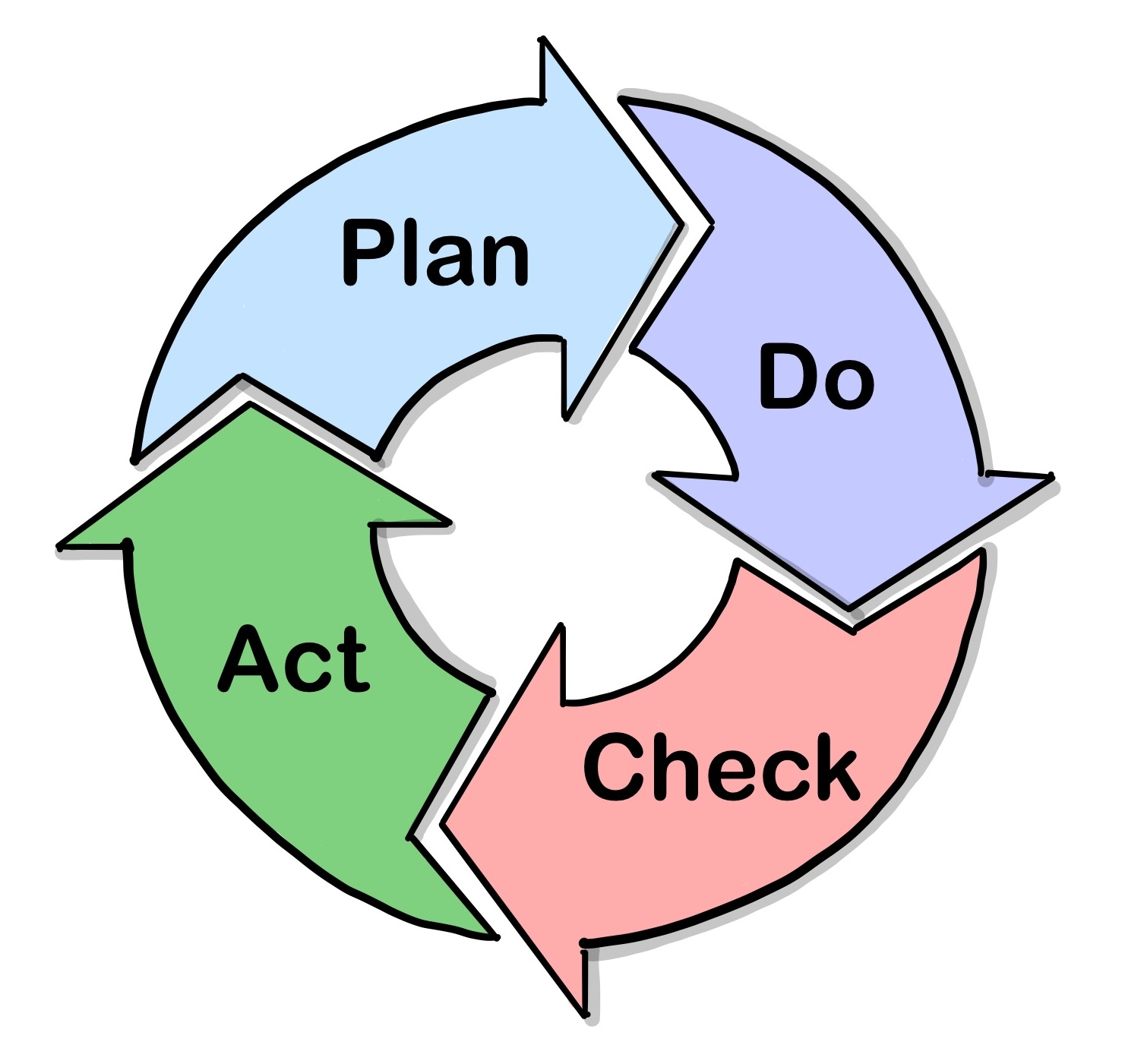Here you can find my drawings on High-Performing Team.
Feel free to use those visuals for your work and study.
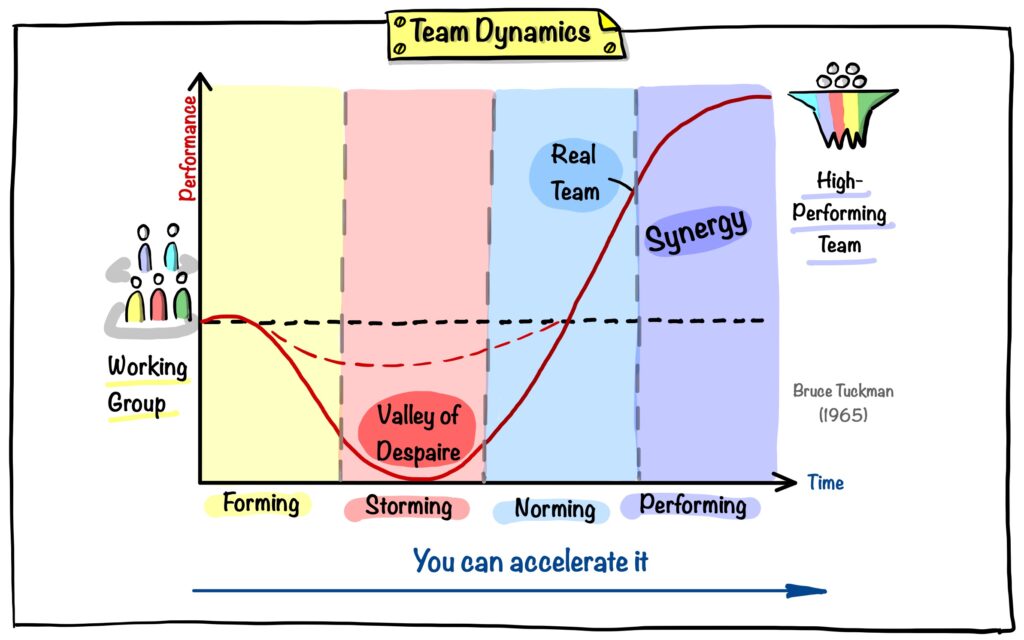
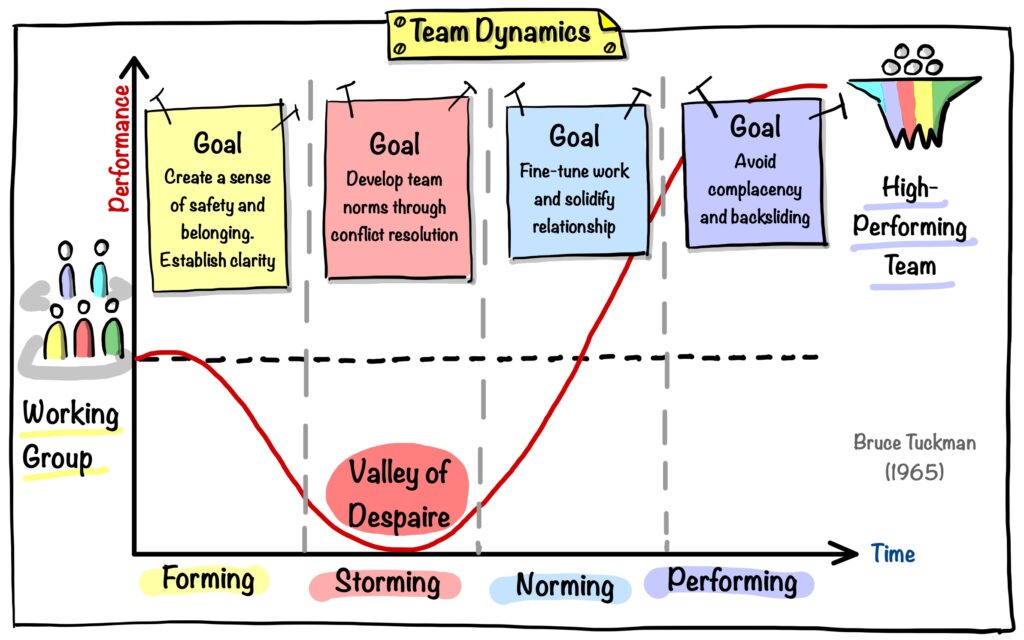


See also: Teams: Diversity or Similarity?
The Five Dysfunctions of a Team
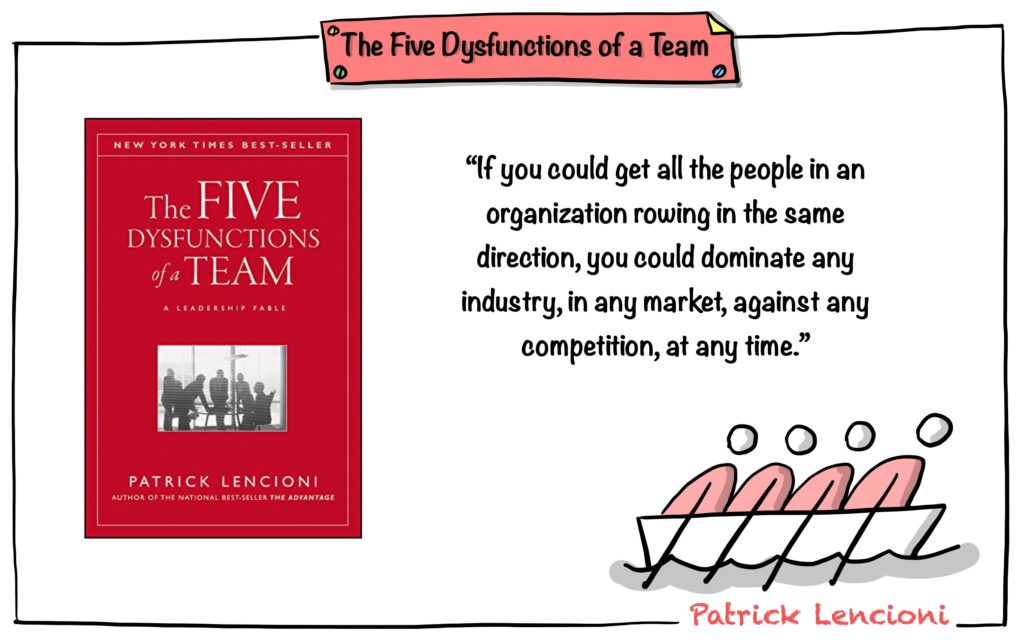
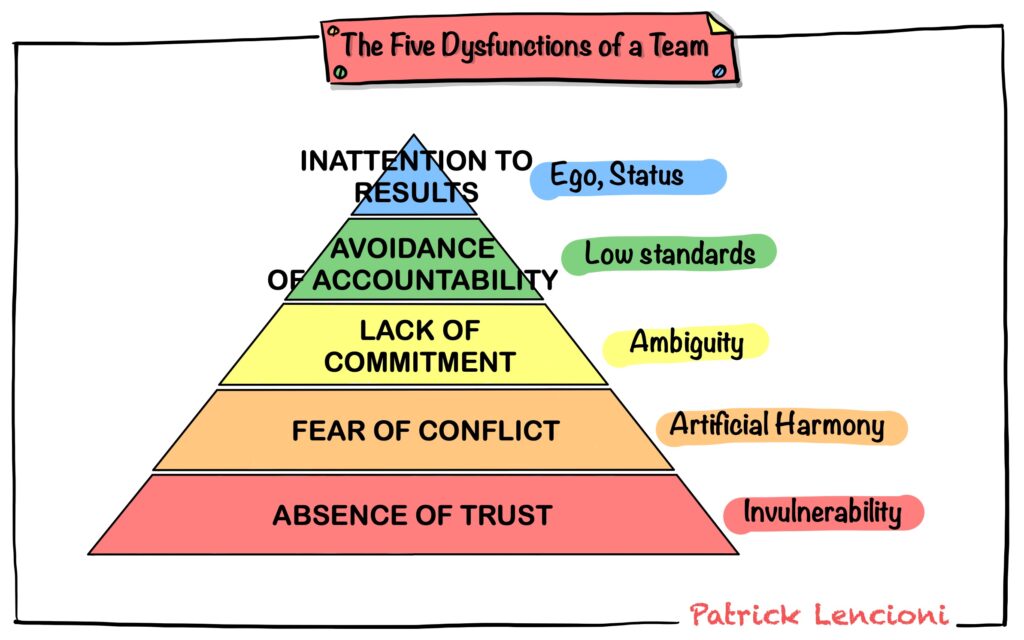
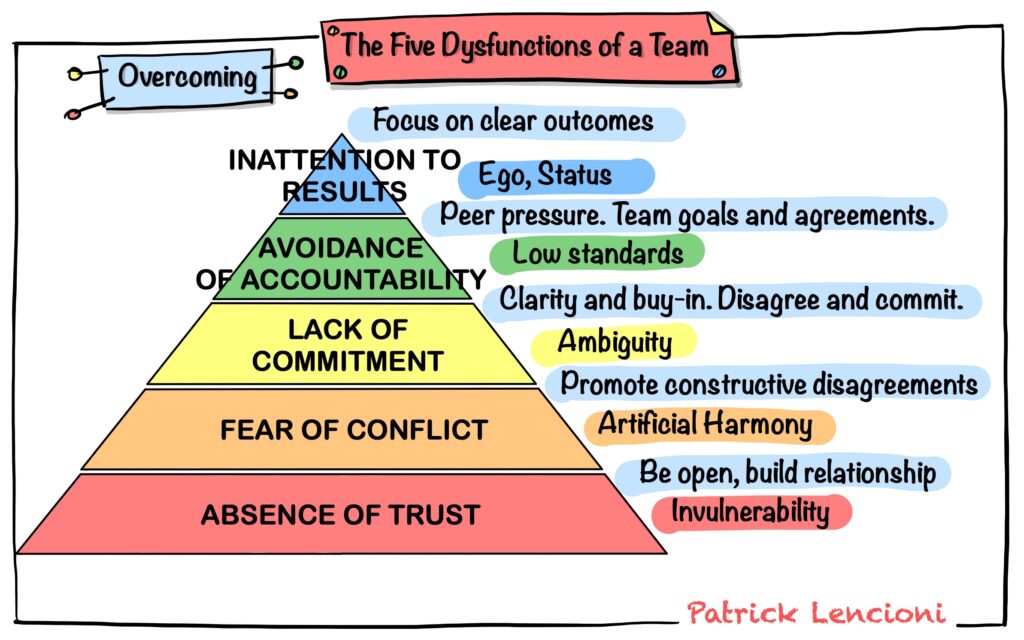
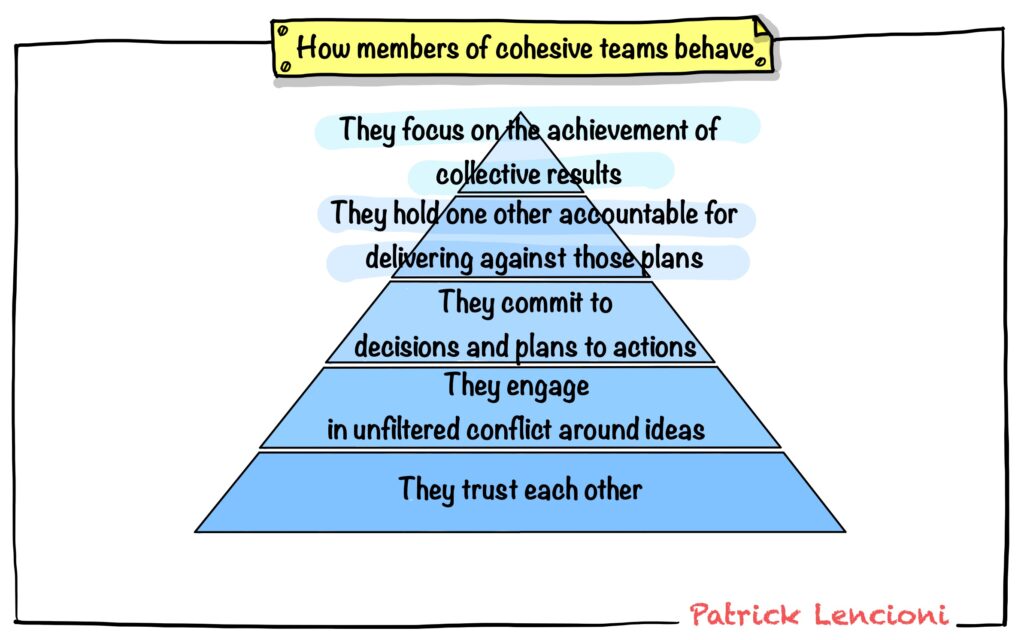
See also How I run “The Five Dysfunctions of a Team” workshop
Trust in Team
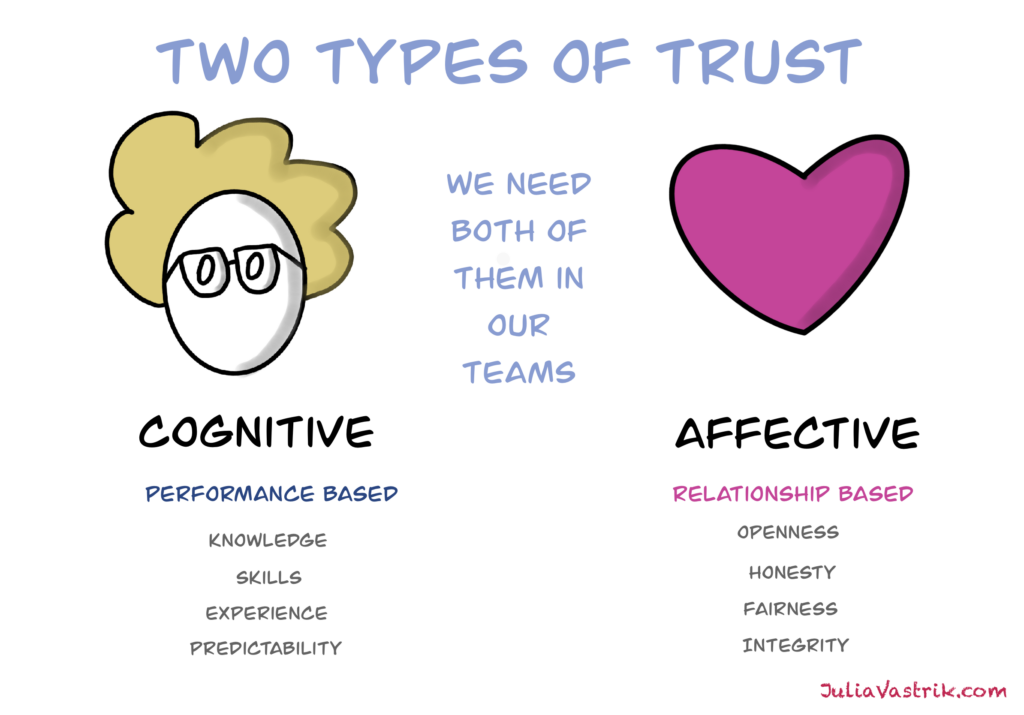
Trust in teams comes both from our hearts and our heads.
We need to trust our team members not only as people but also as professionals.
We might like our teammate as a person, but if they are not able to contribute to our team goals due to a lack of needed expertise or skills, we cannot rely on them in our work.
There are two types of trust that we need in our teams: Cognitive Trust – performance based, and Affective Trust – relationship based. They both are crucial for our teams to accomplish complex tasks and achieve our goals together.
The more complex the team’s task, the more collaboration is needed, and the deeper the relations between individuals in the team need to be to come up with solutions. And, of course, the team members need to be professionals to be able to bring the solutions to life.

It also depends on our culture. In her book The Culture Map Erin Meyer highlights the Trust dimension as one of the key aspects that varies significantly across cultures. She categorizes trust into two main types: task-based trust and relationship-based trust.
→ Task-Based Trust: Trust is built through work interactions and professional competence. It’s based on how reliably and effectively someone performs their job.
→ Relationship-Based Trust: Trust is built through personal connections, shared experiences, and emotional bonds. Relationships and social interactions play a crucial role in developing trust.
While both types of trust are important in the workplace, we might consider emphasizing one over the other depending on the culture and background of our team members.
For example, we need to be more straight to the point with many Dutch people on our team.
On the other hand, we should invest heavily in relationship-building with our Indian, Brazilian, and Chinese colleagues.

Usually, we pay more attention to Cognitive Trust in our work settings and, to a much lesser extent, to Affective Trust, sometimes fully ignoring it, leaving our personalities outside office doors.
However, we are a better team when we like the people we work with. For this, we need to get to know them. We can start this process first by helping others to get to know us by offering a bit of our personality along with our professionalism.
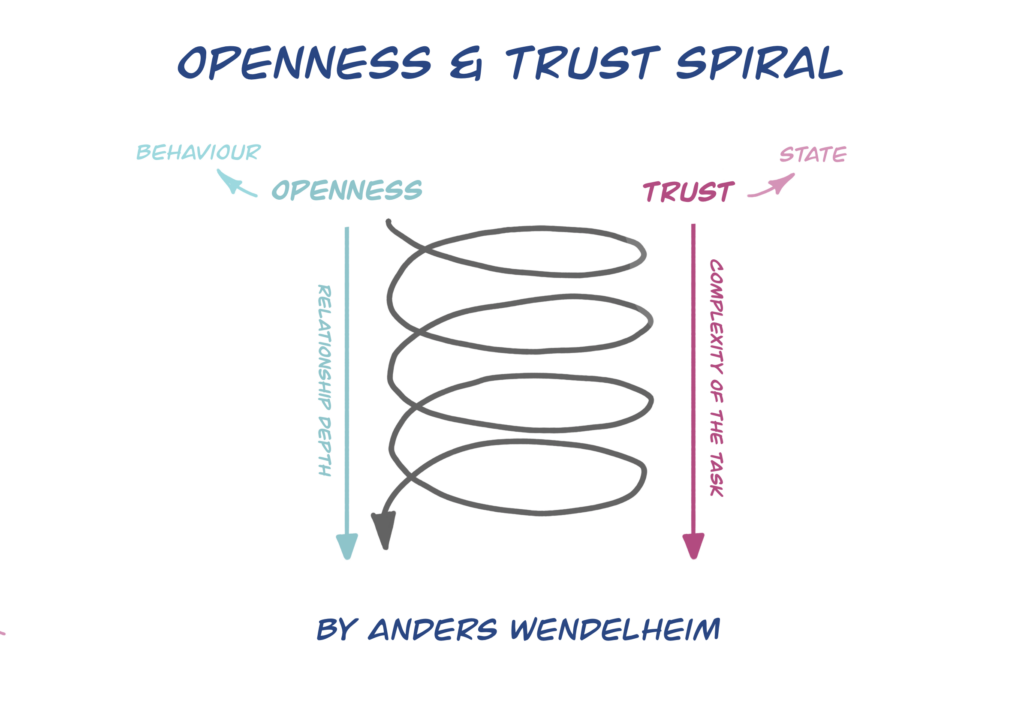
The Openness & Trust spiral is a model that I find very useful for explaining to teams why it is important to open up ourselves and reveal our personalities in professional settings.
It was developed by Anders Wendelheim from Stockholm University and introduced to me by wonderful colleague Lotta Nordqvist several years ago, and I got hooked right away by this idea.
This model explains how Openness and Trust are interconnected and how they reinforce each other.
The more open we are with each other, revealing our personalities, the more mutual trust we create, and with more trust, it is easier for us to open up even more. This way openness and trust spiral starts developing and going deeper on and on.
Furthermore, the more open we are, the deeper our relationships become, and the more trust we have in each other, and the more complex tasks we can accomplish together.
➡️ And the good news is that while Trust is a resulting State, Openness is a Behaviour that depends solely on us. Understandable that it might be challenging for many of us to make the very first step and open ourselves up when the level of trust between us is not that high yet, still we could make this effort and go out of our comfort zone a little bit further every time, as our level of mutual trust also grows.
❗️Here, however, is important to distinguish between personal and private information. If you share too private stuff about yourself, you could put other people in a difficult situation – they might feel awkward knowing those too private details about you and also feel that now is their turn to share private details about them.
At the same time, information about your personality adds a new perspective on who you are besides being a professional and makes people like you and trust you.
All of us can be brave, deciding to make this first step and open up to others, starting this wonderful positive spiral that leads to increased trust and deeper relationships.
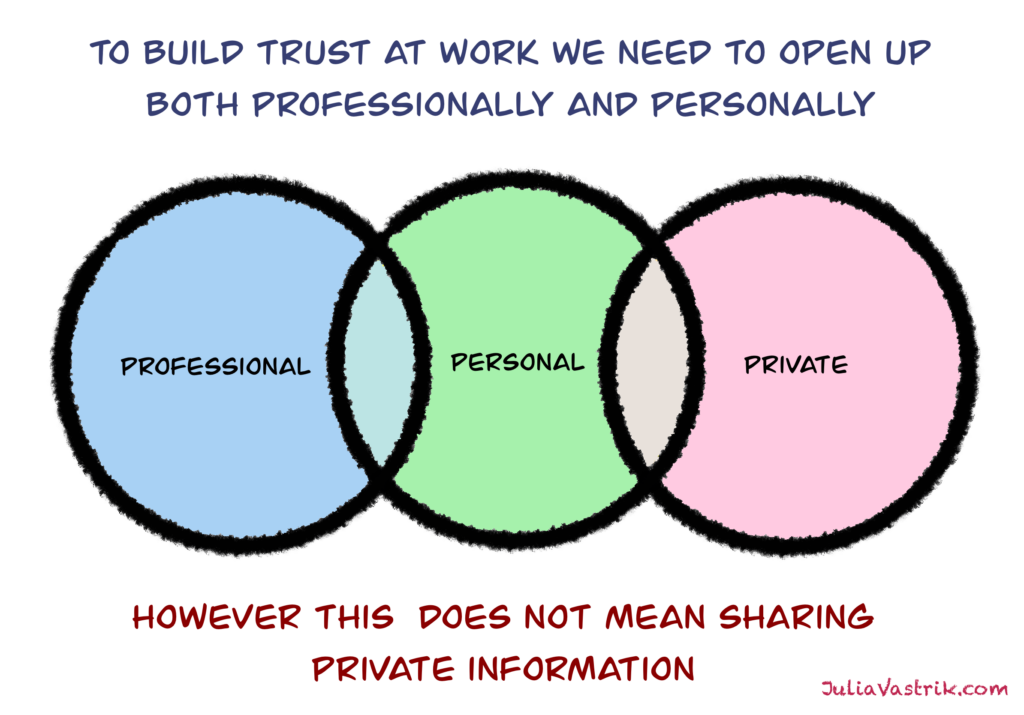
However we should not go too far either by sharing too private information.
It may make others feel awkward. They don’t want to know those private details about us, and they might feel pressure to share their private stuff as well after we have opened up.
This might create the opposite effect, people could start avoiding us.
Don’t overshare.
See also: Icebreakers to get know each other better and build trust
Psychological Safety
